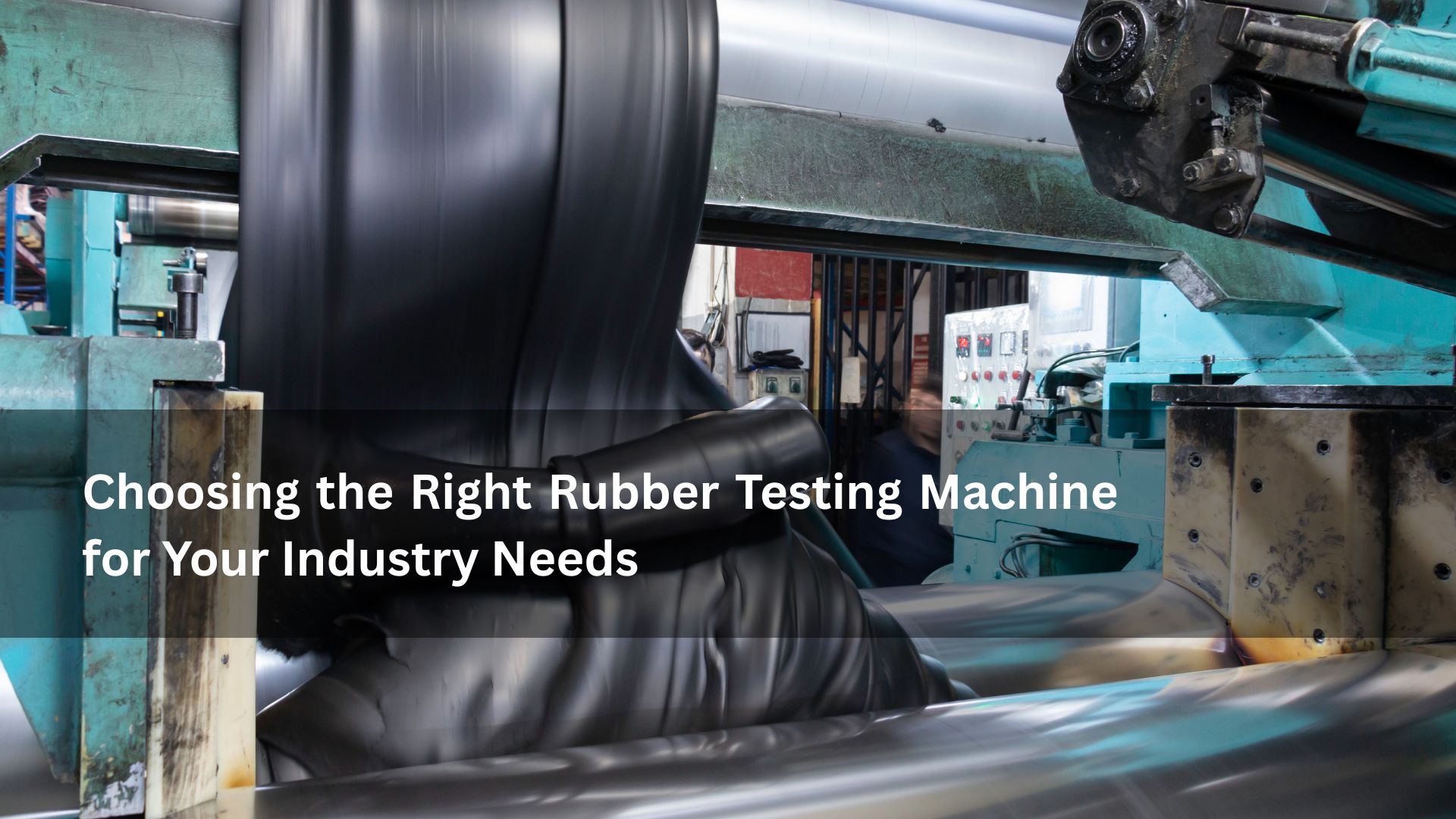Introduction to Rubber Testing Machine and Its Role in Quality Assurance
Choosing the right Rubber Testing Machine is one of the most critical investments a manufacturer can make when working with rubber materials. The right machine ensures your products meet regulatory compliance and customer expectations for safety, durability, and performance. As materials and demands evolve, your testing tools must keep up. A Rubber Testing Machine ensures that every batch of rubber components undergoes a rigorous examination before being approved for production. This initial quality checkpoint is essential in reducing defective products and safeguarding brand reputation.
Why a Rubber Testing Machine Is Essential in Manufacturing
Rubber is widely used due to its elasticity and adaptability. However, these same properties make it more susceptible to performance variability. That’s where a Rubber Testing Machine becomes essential. By conducting precise and repeatable tests, manufacturers can identify inconsistencies in raw materials, optimize compound formulations, and predict the behavior of rubber under stress. These capabilities help manufacturers prevent recalls, compliance issues, and safety hazards, making the Rubber Testing Machine a true gatekeeper of product quality.
Rubber Testing Machine Capabilities and Standards Compliance
A high-performance Rubber Testing Machine must support testing standards such as ASTM D412 for tensile strength, ASTM D395 for compression set, ASTM D2240 for hardness, and many more. This versatility ensures that your operations remain in full compliance with industry regulations. Modern machines, such as those offered by Victor Testing Machine, allow for modular upgrades to handle evolving testing needs. Whether you need to measure ozone resistance, fatigue life, or elasticity recovery, your Rubber Testing Machine should be ready to perform reliably.
Enhancing Accuracy with Digitally Controlled Rubber Testing Machine
Today’s leading Rubber Testing Machines come equipped with digital control systems that provide unmatched accuracy and repeatability. Touchscreen interfaces, real-time graph plotting, programmable test cycles, and wireless connectivity enhance usability while reducing human error. These digital features are particularly useful in high-volume manufacturing settings where throughput speed and consistency are key. Advanced machines also allow for cloud-based data storage, enabling better traceability and long-term data analysis.
Load Capacity and Measurement Accuracy in Rubber Testing Machine
Load capacity and measurement range are vital factors when selecting a Rubber Testing Machine. If you’re testing small rubber gaskets or seals, precision in low-force measurements is key. For larger automotive bushings or industrial dampers, the machine must deliver high-load capabilities. A mismatch in load range could lead to inaccurate results or damage to both the specimen and equipment. High-precision load cells and extensometers help improve result accuracy, providing reliable insights into material properties under different stress conditions.
Sensor Technology in a Rubber Testing Machine: Precision Matters
Precision sensors in a Rubber Testing Machine are central to detecting small changes in material performance. Look for features such as high-resolution force sensors, non-contact extensometers, and real-time displacement tracking. These advanced sensor technologies help detect minor deformations and provide granular insights that can influence product design. The ability to gather fine-tuned data allows manufacturers to optimize material selection, reduce waste, and increase product life cycles.
Rubber Testing Machine for Multiple Rubber Types and Formulations
A robust Rubber Testing Machine must be adaptable to different types of rubber materials. From natural rubber (NR) and styrene-butadiene rubber (SBR) to silicone (VMQ) and thermoplastic elastomers (TPE), each compound presents unique challenges. Machines that can adjust test settings such as temperature, pressure, and elongation rate allow for more accurate and comprehensive assessments across all product lines. This flexibility enables R&D teams to innovate faster and ensures production lines maintain consistent quality across diverse products.
Industry-Specific Rubber Testing Machine Applications
Each industry that uses rubber materials comes with its own set of performance requirements. In the automotive sector, rubber must withstand temperature fluctuations and vibration. Aerospace applications require resistance to ozone, altitude changes, and fuel exposure. The healthcare sector demands biocompatibility and sterilization resistance. A Rubber Testing Machine tailored to meet these diverse demands ensures product safety, longevity, and compliance across the board. By aligning testing capabilities with industry-specific benchmarks, manufacturers can stay ahead of regulations and exceed customer expectations.
Victor Testing Machine: Innovating the Rubber Testing Machine Landscape
Victor Testing Machine has established itself as a trusted provider of high-performance Rubber Testing Machines. Their machines are built with cutting-edge technology, offering features such as automated test cycles, robust data management systems, and customizable test protocols. Whether you’re managing a small R&D lab or a large-scale production facility, Victor’s range includes benchtop units and fully automated platforms. Their focus on durability, precision, and customer support ensures long-term operational efficiency and peace of mind.
Conclusion: Invest in the Right Rubber Testing Machine for Long-Term Success
Choosing the right Rubber Testing Machine isn’t just about checking boxes on a specification sheet—it’s about securing your position in an increasingly competitive market. With the right equipment, you can ensure that every product meets the highest quality standards before it reaches your customers. Investing in a Rubber Testing Machine from a reliable provider like Victor Testing Machine means investing in consistent performance, faster time-to-market, and reduced production risks. As materials continue to evolve and industry standards rise, your testing machine should be a step ahead—ensuring your success in every cycle of production.










